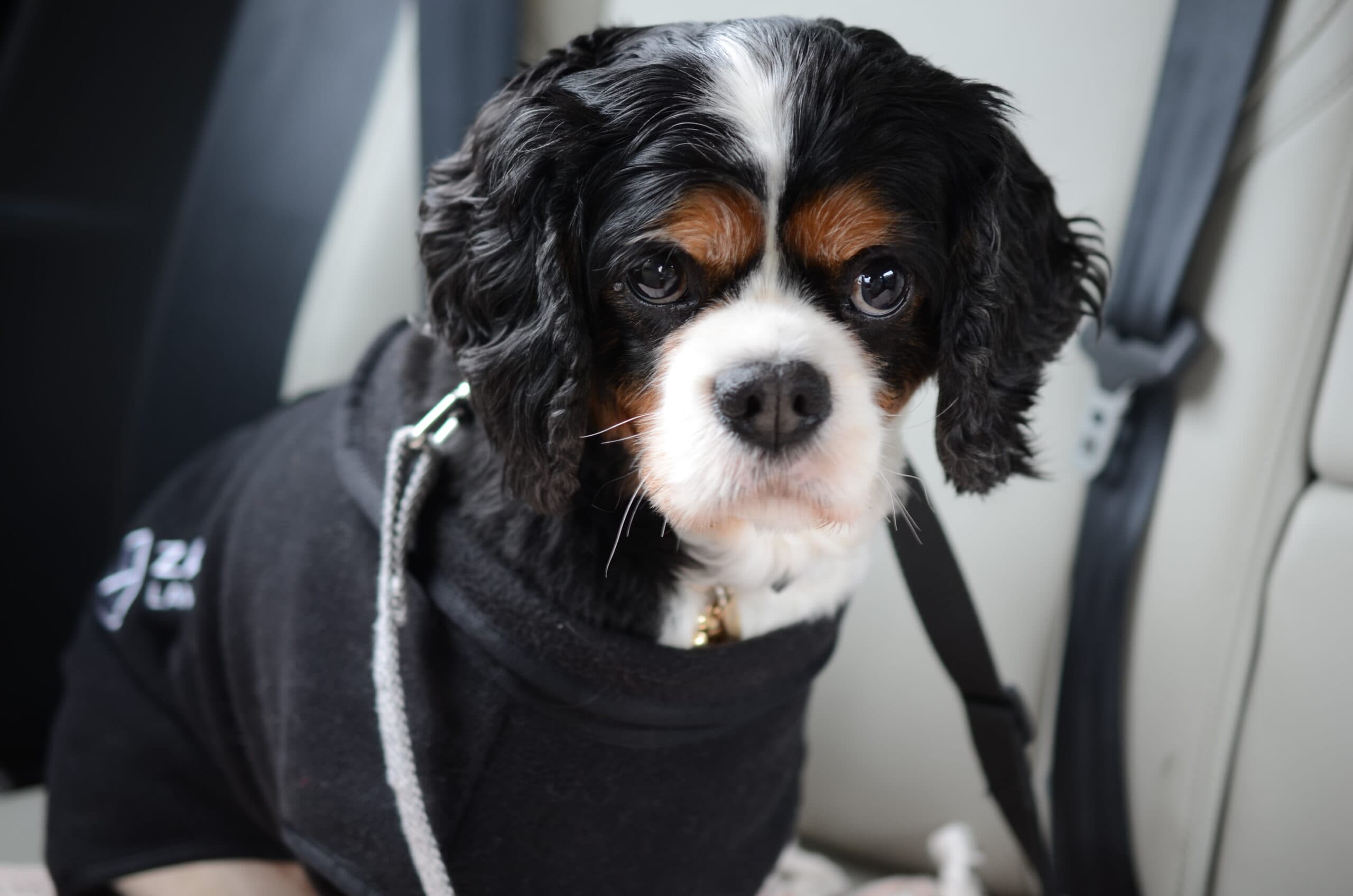Riding in Cars with Pets
Published on Posted onPlease note that this post was written for Victorian audiences and the information within may not apply to other regions.
Pets are often a welcome distraction to the stressors of everyday life. Research has found that interacting with a pet can elevate our levels of serotonin, dopamine, oxytocin and adrenaline. This has a positive effect on our brain chemistry with immediate flow-on effects to our mental and physical health – by, for example, lowering blood pressure, boosting immunity, reducing muscle tension and decreasing the risk of hypertension and heart disease. A Japanese researcher, Mr Hiroshi Nittono, found that productivity and mood can be lifted by simply looking at pictures and videos of ‘cute baby animals’ online.
At Zaparas Lawyers, we have embraced the science by experimenting with an informal ‘doggy Fridays’ policy, which allows our staff to bring their furry friends to work for a few hours at the end of the week. This has included visits from Honey the Cavoodle, Dexter the Beagle and Paddington, my King-Charles Cavalier. The visits have showcased the way in which animal distraction and interaction can have a positive impact on our mind-sets and general wellbeing – with one exception.
The exception was something I came across in preparing for Paddington’s visit to the office. Of course, he had to be freshly groomed, bathed, sprayed in doggy, cologne, and dressed to impress. He also had to get to the office in one piece, safe and sound, in my car, with me, the designated driver. It was upon this realisation, that I became aware of one situation in which pets can be an unwelcome distraction to their owners and to society at large – on the road.
The Distraction Dilemma
According to the Transport Accident Commission, the Victorian road toll for 2019 currently stands at 203 lives lost, which is a 38.1% increase since the same period last year. Of course, the number of persons injured on Victorian roads is much higher.
In explaining the most common causes of road traffic accidents, Mr Jerome Carslake, Manager of the National Road Safety Partnership Program has pointed to factors such as fatigue, speed, distraction, alcohol and drugs. Importantly, he has added that ‘around 90% of all crashes are due to minor mistake’, such as distraction.
A study by Monash University’s Accident Research Centre (MUARC) in 2018 reported that ‘drivers are distracted for 45% of the time behind the wheel’ or ‘every 96 seconds’. Media and legislative attention is currently focused on the contribution of mobile phone use to driver distraction and road trauma.
Previously, consideration was given to the issue of peer distraction in accidents involving young and inexperienced drivers, which was addressed with the ‘peer passenger’ restrictions on P1 drivers.
The impact of squabbling or fussing children in the backseat, has escaped legislative intrusion, but has not been forgotten – experienced daily by most parents, and recorded by MUARC as one of the most significant driving distractions, ahead of mobile phone use.
The Pet Percentage
Interestingly, research into the reasons behind the Victorian road toll; fail to discern the percentage of accidents caused by pets in cars. Whilst we can hope this is because their impact is negligible, American researchers suggest this is merely due to lack of reporting.
Owner Obligations
Victorian traffic law is largely silent on how we should travel with our pets and imposes no direct obligation on a driver to prevent their pet from causing them distraction whilst driving.
Some obligations on drivers travelling with animals are imposed under the Road Safety Rules 1997 (Vic) (‘the rules’), and under Animal Welfare legislation.
For example, under the rules (regulation 297(1A)) a driver cannot operate a vehicle with an animal on their lap, or while the driver or a passenger is leading an animal, or while an animal is tied to a vehicle.
Furthermore, a motorbike rider must not ride with an animal on the motorbike between the rider and the handlebars, or in another position that interferes with the rider’s ability to control the motorbike or to have a clear view of the road (regulation 297(3)).
Under the Prevention of Cruelty to Animals Act 1986 (Vic) it is illegal to put an animal in the boot of a sedan type car. An animal travelling in the back of a Ute must be restrained either via a tether or cage, except if they are actively working livestock. This is to ensure the animal does not fall or jump off the moving vehicle. There are also obligations on owners to prevent pets from suffering heat stress (e.g. pets must not be left unattended in cars and caution should be exercised when leaving pets in the cabin of a Ute once parked).
Importantly and in contrast to other parts of Australia, there is no specific requirement that animals are restrained within the cabin of a vehicle or that they travel in the backseat.
The legislation broadly provides that a driver must not drive unless the driver has proper control of the vehicle, and a clear view of the road; traffic ahead, behind and to each side of the driver. This would suggest that steps should be taken to prevent an animal from moving around the vehicle. Offences such as those for careless and dangerous driving may be enlivened where a person drives unsafely because of an animal in their car.
Smart Solutions
A practical approach would ensure that pets are adequately restrained in the back seat of a car, or behind a cargo barrier. This can be achieved using a pet seatbelt or pet carrier.
Properly restrained pets cannot move around inside the vehicle, reducing distraction to the driver. They are less likely to become airborne in the event of an accident or heavy braking, avoiding injury to themselves, passengers and the driver. Restrained pets should also be prevented from jumping out of car windows, injuring themselves, or endangering other road users.
Positioning your pet in the back of the car, rather than the front again, reduces driver distraction, but also decreases the risk of injury in the event of an accident (should the airbags deploy).
My Notes on Negligence
Although law makers have shied away from dictating exactly how we should travel with our pets, failure to adopt a common-sense approach can still give rise to a finding of negligence against a driver. Negligence is the failure to do what a reasonable person would have done in the same circumstances. Given the importance of minimising driver distraction and preventing injury to all road users (including animals), properly restraining pets in the car is just common sense. It is important to note that negligence actions cannot be mounted on your pet’s behalf, however, there may be recourse under the Animal Welfare Legislation.
If you or someone you know has been injured on the road because of driver distraction, or an improperly restrained pet, our dedicated TAC team at Zaparas Lawyers will be able to guide your through your potential entitlements. Zaparas Lawyers act on a ‘No Win, No Fee’ basis. In simple terms, this means that in the unlikely event that we don’t secure compensation for you, we will not charge you for any of our professional fees.
Contact our office today on (03) 8527 0200 today for your initial obligation-free appointment.
How did Paddington make it to the Zaparas office? As pictured – safely, seat-belted and in style.


